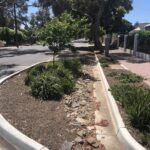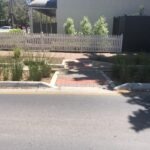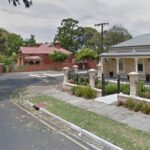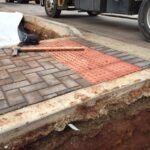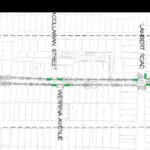Project planning & design
(Excerpt from Look East, December 2018)
Recognised as a valued character street, and popular cycling and walking route, Ninth Avenue, Joslin and St Peters, was selected as the perfect pilot project to undertake a ‘complete street’ upgrade, meeting objectives of the Council’s strategic plan, CityPlan 2030: Shaping Our Future.
A ‘complete street’ approach considers the design of the street as a whole rather than focusing on the renewal of individual assets such as footpaths, roads, kerbing and lighting.
The project has delivered a one kilometre stretch of newly resurfaced road, new footpaths, lighting, and landscaping including several new trees and raingardens. The raingardens are designed to capture stormwater run-off, thereby reducing contaminants and improving water quality in the nearby Rover Torrens.
Intersections have been designed to encourage slower driving while parking edge lines and new shared lanes with sharrow markings contribute to overall improved road safety of Ninth Avenue.
Compliant with current Australian Disability Standards, kerb ramps and protuberances have improved pedestrian access and safety, while new LED street lighting will deliver energy savings for the Council and provide added benefits of general safety through a well-lit street.
Considered to be a successful outcome, the ‘complete street’ approach will be adopted for future streetscape enhancement projects throughout the City.
WSUD features & design criteria
Prior to the streetscape upgrade, stormwater was managed via the kerb and gutter system draining to side entry pits (SEPs) and via a conventional underground stormwater pipe system to the River Torrens. In the new design, stormwater runoff from the street and adjoining dwellings is directed to a series of raingardens that are located at four intersections where the Ninth Avenue stormwater enters the underground pipe system.
The 17 raingardens have been designed to provide between 100mm and 200mm of extended detention during rain events. Excess stormwater from larger rain events or infiltrating through the raingarden media is designed to overflow directly into the existing underground stormwater pipe system.
The raingardens contain sedges that are effective at removing stormwater pollutants, particularly nitrogen. Six species of companion plants provide amenity, biodiversity value and seasonal resilience to the raingardens.
BackContact us to provide any new information or images for existing WSUD projects.
Update WSUD project

